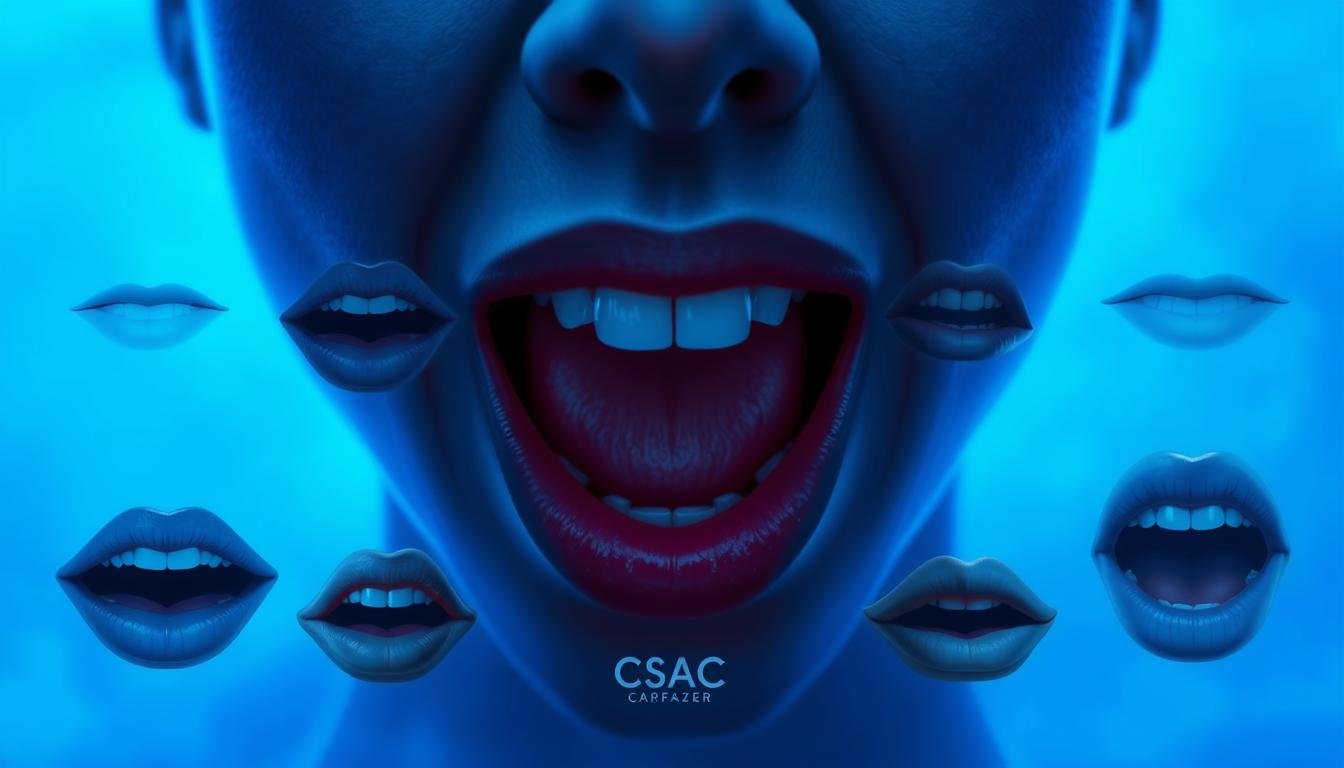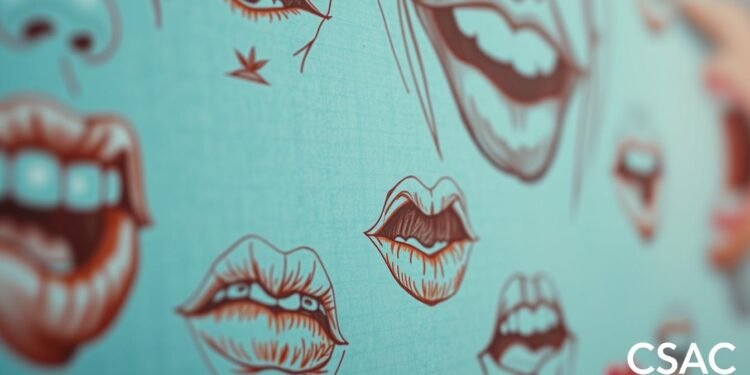As an eloquent author of the editorial team of CSAC.org.uk, I am excited to share with you the art of drawing mouths, a crucial aspect of capturing realistic facial expressions. Did you know that the face is generally split into thirds vertically, with the area between the base of the nose and the bottom of the chin further divided into thirds, aligning with the middle of the mouth? This understanding of mouth anatomy is essential for creating realistic drawings. With the advancement of digital drawing tools, such as those from Wacom, artists can now achieve highly realistic results. In this guide, we will explore the basics of drawing mouths, including the position, shape, and shading, as well as more advanced techniques for creating realistic lips and facial expressions using digital drawing tools and understanding mouth anatomy.
By following this step-by-step guide, artists of all levels can improve their skills in drawing mouths, from understanding the basics of mouth anatomy to mastering digital drawing tools. Whether you are a beginner or an experienced artist, this guide will provide you with the necessary techniques and tips to create realistic and expressive mouth drawings, covering topics such as drawing mouths, mouth anatomy, and digital drawing tools.
Essential Tools and Materials for Drawing Mouths in 2025
When it comes to drawing mouths, artists have a wide range of tools and materials to choose from. Traditional drawing supplies, such as pencils and paper, offer a tactile experience and are excellent for beginners. On the other hand, digital tools like Wacom tablets provide versatility and ease of use, especially for those familiar with digital art. Additionally, AI-enhanced drawing applications can assist in achieving realistic results with less effort.
In recent years, there has been a significant shift towards technology in the art industry, with 75% of artists reported using digital tools for drawing mouths. However, traditional drawing supplies still have their place, with 70% of professional illustrators considering reference photos essential for accurately depicting lips and mouths. Understanding the capabilities and limitations of each tool is essential for selecting the best fit for a project.
Some popular tools and materials for drawing mouths include:
- Soft pencils for shading lips
- Digital shading techniques
- Reference photos
- AI-enhanced drawing applications
- Graphics tablets from Wacom
By choosing the right tools and materials, artists can improve their skills and create realistic mouth drawings. With practice and patience, anyone can master the art of drawing mouths, regardless of their level of experience.
Understanding Mouth Anatomy and Structure
When it comes to drawing a mouth, understanding the mouth anatomy is crucial. The mouth is a complex feature that plays a significant role in facial structure. The relationship between the lips, the cupid’s bow, and the oral cavity is essential to capture the overall appearance of the mouth. The planes of the lips, the angle of the mouth, and the proportions of the facial features all contribute to the mouth’s anatomy.
The average distance from the mouth to the chin is approximately twice the distance from the mouth to the nose. The width of the average mouth is roughly equal to the distance between the pupils. About 90% of the mood of a face can be influenced by the corners of the mouth. Narrow upper lips are typically associated with a more masculine appearance, while a flattened “V” indentation can give a more feminine look.
Key elements of the mouth include the teeth, tongue, and gums, which are essential for accurate representation. The thickness, W, and length of lips vary significantly based on character design, impacting the visual representation. A small mouth is often associated with a shy character, while a large mouth typically indicates a more expressive character. The integration of exaggerated expressions in character design can enhance the dynamic quality of illustrations.

Understanding the anatomy and structure of the mouth is fundamental to drawing realistic mouths. By studying and practicing the drawing of these elements, artists can develop a deeper understanding of mouth anatomy and improve their drawing skills. The mouth is represented as a half-sphere to illustrate its vol and structure. The upper lip curves as a bow, encompassing a volume roughly the size of a tennis ball.
How to Draw a Mouth: Basic Techniques and Forms
To draw a mouth, it’s essential to start with basic drawing techniques, focusing on simple shapes and proportions. Understanding the relationship between these elements is crucial for creating a realistic and visually appealing mouth. By mastering basic drawing techniques, artists can develop their skills and confidently progress to more complex drawings.
When drawing a mouth, it’s helpful to break it down into simple shapes, such as circles, triangles, and rectangles. These shapes can be used to establish the foundation of the mouth, including the lips, teeth, and surrounding facial features. By applying basic drawing techniques, such as proportion and measurement, artists can ensure that their drawing is accurate and realistic.

- Using three parallel lines as a starting point for drawing lips, with the middle line being longer than the other two
- Creating a flattened hexagon shape by joining the edges of the three lines
- Adding definition and volume to the lips using curves and shading
By following these steps and practicing basic drawing techniques, artists can develop their skills and create realistic and engaging mouth drawings.
Creating Realistic Lip Textures and Shadows
To achieve realistic lips, it’s essential to focus on the textures and shadows. The lips have a unique texture that can be challenging to capture, but understanding how light interacts with them is key. By using shading techniques, such as hatching and cross-hatching, artists can create depth and dimension.
Some key tips for creating realistic lip textures and shadows include:
- Using a paper blender to blend dark areas marked on the lips
- Angling the lips properly for accurate representation in portraits, particularly in a ¾ view
- Paying attention to the subtle variations in lip texture and the way shadows fall on the lips
- Using an HB pencil for adding texture to lips and a 5B pencil for shading under the top lip
Additionally, artists can use vertical semi-circular lines and arcs to illustrate volume on the lips, and soften shading lines to define lip outlines. The use of high-quality materials, such as Drawlish drawing pencils, can also significantly improve precision and detail in drawings. By following these tips and practicing these techniques, artists can improve their ability to draw lips that look natural and lifelike, with realistic lips, textures, and shadows.

By mastering the art of creating realistic lip textures and shadows, artists can take their portraits to the next level, capturing the subtleties of the human face and creating a more realistic and engaging representation of their subjects.
Advanced Digital Techniques for Mouth Drawing
As artists continue to push the boundaries of digital art, advanced digital techniques have become essential for creating realistic and detailed mouth drawings. By leveraging digital techniques, artists can achieve a level of precision and control that is difficult to attain with traditional methods. The use of smart layering systems, for example, allows artists to work with multiple layers, making it easier to edit and refine their drawings.
One of the key benefits of digital techniques is the ability to use AI-assisted tools to enhance the drawing process. These tools can help artists achieve realistic shading and textures with less effort, allowing them to focus on the creative aspects of their work. Additionally, real-time reference integration enables artists to work with live models or reference images, enhancing the accuracy and realism of their drawings.
Some of the advanced digital techniques used in mouth drawing include:
- Smart layering systems to create complex and detailed drawings
- AI-assisted shading tools to achieve realistic textures and shading
- Real-time reference integration to work with live models or reference images
By mastering these advanced digital techniques, artists can create highly detailed and realistic mouth drawings that showcase their skills and creativity. Whether working on a portrait, illustration, or concept art, the use of digital techniques can help artists achieve their goals and produce high-quality work.
| Technique | Description |
|---|---|
| Smart Layering | Allows artists to work with multiple layers, making it easier to edit and refine their drawings |
| AI-Assisted Shading | Helps artists achieve realistic textures and shading with less effort |
| Real-Time Reference Integration | Enables artists to work with live models or reference images, enhancing the accuracy and realism of their drawings |
Expressing Emotions Through Mouth Drawings
When it comes to conveying emotions through facial expressions, the mouth plays a vital role. Expressing emotions through mouth drawings can greatly enhance the impact of a drawing, making it more engaging and emotionally resonant. By understanding how to draw the mouth in various states of emotion, artists can create drawings that capture the subtleties of human emotion.
A key aspect of expressing emotions through mouth drawings is capturing the dynamic movement of the mouth. This can be achieved by studying the way the mouth moves when expressing different emotions, such as joy, sadness, or anger. For example, a smiling mouth can be drawn with a gentle, upward curve, while a frowning mouth can be drawn with a downward curve. By mastering these dynamic movement techniques, artists can add a new level of depth and emotion to their drawings.

Some common expressions that can be used to convey emotions through mouth drawings include:
- A slight, enigmatic smile to suggest mystery or intrigue
- A wide, open-mouthed grin to convey joy or excitement
- A downturned mouth to indicate sadness or disappointment
- A pursed or tightened mouth to suggest anger or frustration
By incorporating these expressions into their drawings, artists can create a range of emotions and moods, from subtle and nuanced to bold and dramatic. By focusing on the expressive qualities of the mouth, artists can create drawings that are not only technically proficient but also emotionally resonant, making use of facial expressions and dynamic movement to convey emotions and capture the viewer’s attention.
Troubleshooting Common Mouth Drawing Challenges
When it comes to mouth drawing, artists often encounter common challenges that can be frustrating and difficult to overcome. Troubleshooting these issues requires a combination of technical skill, observational practice, and patience. One of the most common challenges is achieving realistic proportions, with the lower lip being generally about 1.5 times bigger than the upper lip.
Another challenge is capturing the subtleties of lip texture, which can be achieved by adding vertical creases to the lips, with around 10 lines on each lip for realism. The shading of the lips is also crucial, with the darkest areas at the bottom of each lip and the brightest areas being the middle of the lower lip and the top of the upper lip. By understanding and addressing these common challenges, artists can improve their mouth drawing skills and create more realistic and engaging artwork.
Some tips for troubleshooting common mouth drawing challenges include:
* Practicing regularly to develop observational skills and technical ability
* Using reference images to study the shape and structure of the mouth
* Experimenting with different techniques and materials to achieve the desired effect
* Paying attention to the proportions and measurements of the mouth, such as the distance between the lowest point on the “U” shaped line of the lower lip and the lowest point on the first “U” shaped line
By following these tips and being patient with the learning process, artists can overcome common mouth drawing challenges and create stunning and realistic artwork. With practice and dedication, anyone can master the art of mouth drawing and take their artistic skills to the next level.
Conclusion: Mastering Mouth Drawing in the Digital Age
As the digital age continues to evolve, mastering the art of drawing mouths has become increasingly crucial for artists and aspiring illustrators. By combining traditional drawing skills with the capabilities of digital art software and AI-enhanced tools, creators can achieve highly realistic and expressive mouth drawings that captivate audiences. The key to success lies in a dedication to continuous practice, a willingness to explore diverse techniques, and a deep understanding of facial anatomy and proportions.
In the digital landscape of 2025, where the art market is projected to reach $11.3 billion, the demand for exceptional digital illustration skills, including mouth drawing, has never been higher. By honing their abilities to accurately depict the nuances of the mouth, from subtle expressions to dynamic movements, artists can create characters that resonate with viewers on an emotional level. Whether working on character designs, concept art, or dynamic scene compositions, the mastery of mouth drawing can elevate an artist’s overall creative prowess.
As you continue your journey in the digital age, embrace the wealth of resources and tools available to refine your mouth drawing skills. Leverage the power of AI-assisted shading, real-time reference integration, and intuitive layering systems to push the boundaries of your artistic abilities. Remember, consistent practice and a dedication to understanding facial anatomy and proportions are the keys to unlocking your full potential as a digital artist in the years to come.












